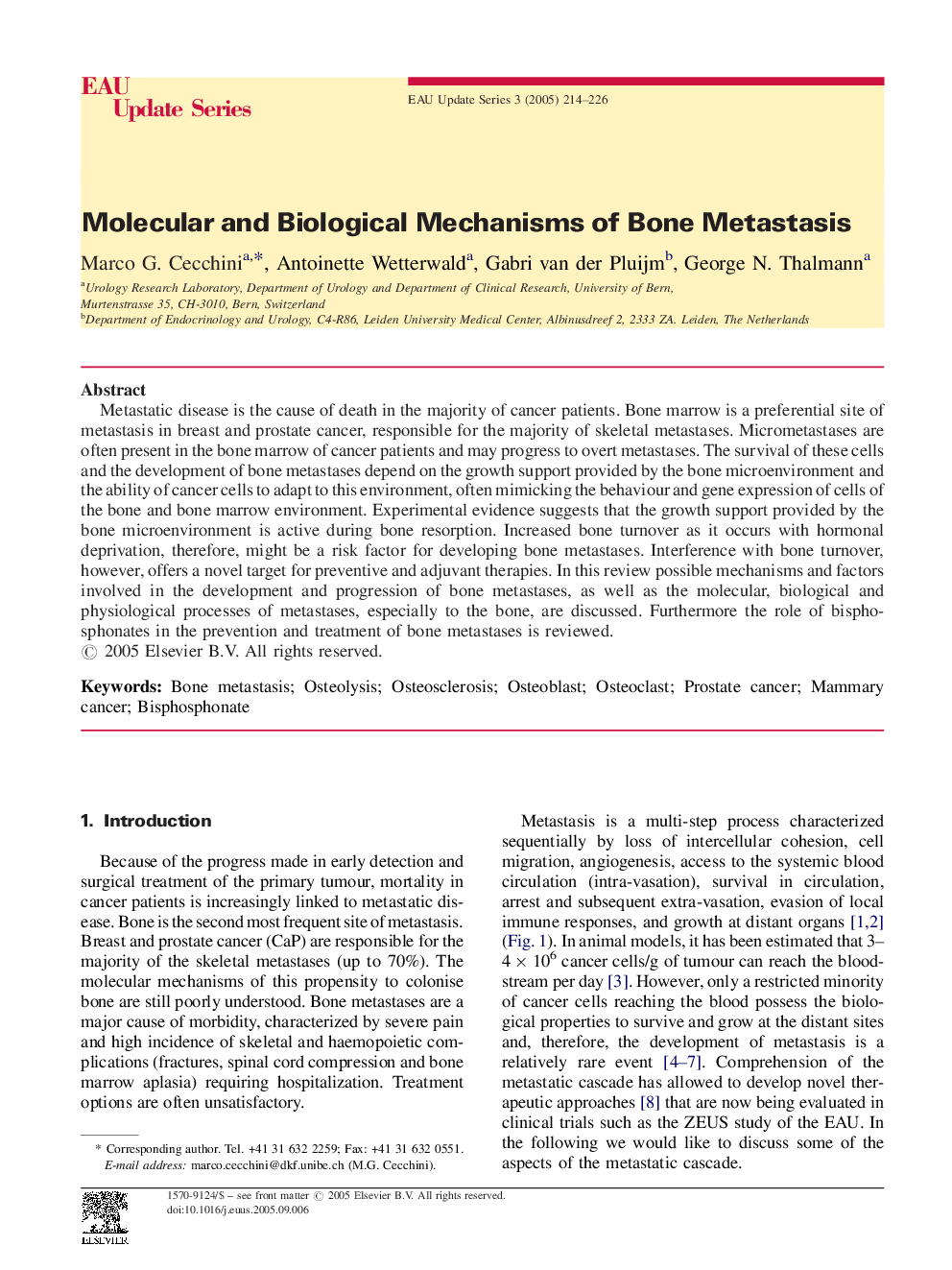| Article ID | Journal | Published Year | Pages | File Type |
|---|---|---|---|---|
| 9319140 | EAU Update Series | 2005 | 13 Pages |
Abstract
Metastatic disease is the cause of death in the majority of cancer patients. Bone marrow is a preferential site of metastasis in breast and prostate cancer, responsible for the majority of skeletal metastases. Micrometastases are often present in the bone marrow of cancer patients and may progress to overt metastases. The survival of these cells and the development of bone metastases depend on the growth support provided by the bone microenvironment and the ability of cancer cells to adapt to this environment, often mimicking the behaviour and gene expression of cells of the bone and bone marrow environment. Experimental evidence suggests that the growth support provided by the bone microenvironment is active during bone resorption. Increased bone turnover as it occurs with hormonal deprivation, therefore, might be a risk factor for developing bone metastases. Interference with bone turnover, however, offers a novel target for preventive and adjuvant therapies. In this review possible mechanisms and factors involved in the development and progression of bone metastases, as well as the molecular, biological and physiological processes of metastases, especially to the bone, are discussed. Furthermore the role of bisphosphonates in the prevention and treatment of bone metastases is reviewed.
Keywords
Related Topics
Health Sciences
Medicine and Dentistry
Obstetrics, Gynecology and Women's Health
Authors
Marco G. Cecchini, Antoinette Wetterwald, Gabri van der Pluijm, George N. Thalmann,
